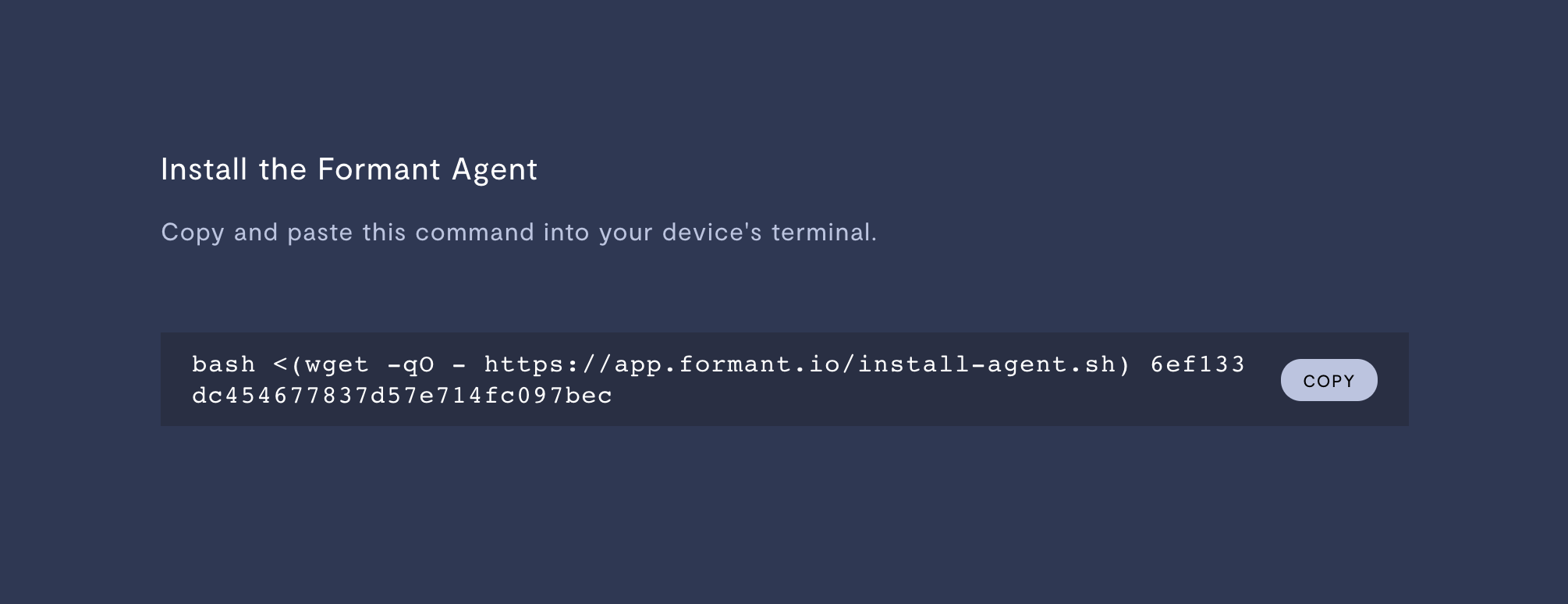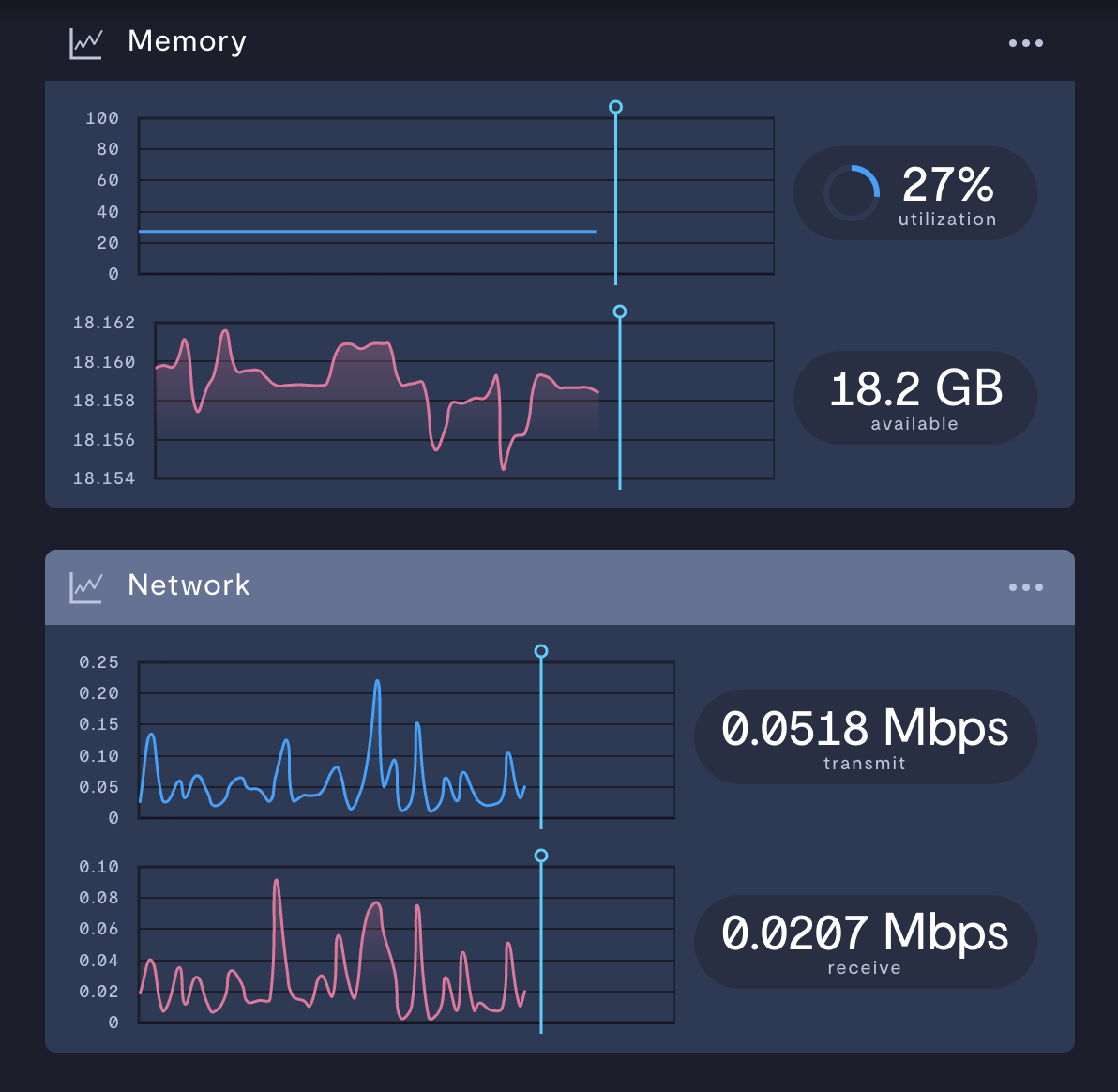Install the Formant agent via Docker
This guide will teach you how to install the Formant agent to your device via Docker.
Docker installations of the Formant agent do not support automatic, over-the-air (OTA) agent updates.
To update the Formant agent, you will have to update the
formant-agentDocker image on your device.
Prerequisites
Create a device
Follow the instructions in Create a device to add a new device to your Formant organization.
Internet connectivity
The target device must have connectivity to app.formant.io and api.formant.io.
You can run the following script on your device terminal to output the robot's details and verify prerequisites:
bash <(wget -qO - <https://app.formant.io/device-check.sh>)
Terminal access
To install the Formant agent on the target device, you must have terminal access to the device and the ability to run commands.
Step 1 (ROS only): Set environment variables
To install a ROS-compatible Formant agent, make sure to export the ROS_MASTER_URI environment variable first. For example, if your ROS master is at its default URI:
export ROS_MASTER_URI=http://localhost:11311
Setting this environment variable before installation is required for ROS compatibility.
You can also export CATKIN_WS so the agent is able to ingest custom messages. For instance,
export CATKIN_WS=/home/ubuntu/catkin_ws
Configuring your catkin workspace path will allow Formant to ingest data using custom ROS message types.
Ensure the ROS master is running
The Formant agent needs to communicate with the ROS master running on your device in order to properly ingest ROS data.
You can check that the ROS master is running by using a command like
rostopic list.
Step 2: Install the Formant agent
Following from the instructions in Step 2 of Create a device: you will see a command which installs the Formant agent to your device.
- Copy the installation command from the web application and paste it in the target device's terminal, but do not run it yet. Note the installation command contains of a provisioning token that is unique to the device and expires after 72 hours.
- Change the script from
install-agent.shtoinstall-agent-docker.sh. The modified command will now look like this:
bash <(wget -qO - <https://app.formant.io/install-agent-docker.sh>) <YOUR PROVISIONING TOKEN>
You can add optional arguments to the docker run command by using the --args flag at the end of the modified command. An example may be to set a custom dns server for the container, which is done using the --dns flag. This would look as follows:
bash <(wget -qO - <https://app.formant.io/install-agent-docker.sh>) <YOUR PROVISIONING TOKEN> --args "-dns=192.168.1.100"

Modify the command you see here by changing the script from install-agent.sh to install-agent-docker.sh
- Run the modified command to begin device installation.
Step 3: Verify successful installation
If the Formant agent has been installed and connection established, Formant will begin ingesting telemetry for default streams like CPU, Network, Memory, and Disk.
- In Formant, in the upper-left corner, open the menu. Under the Observe tab, click on the name of your device.
- Verify that these streams have live telemetry data in the device's telemetry page.

Telemetry data uploaded to a default stream.
Troubleshooting
If you encounter an error in this process, or you still don't see your device online, see Troubleshooting an agent installation.
If you're still stuck, download your Formant agent log and reach out to our Customer Success team for support. You can reach us via the Intercom messenger in the bottom-right corner of this page, or at [email protected].
If you notice an issue with this page or need help, please reach out to us! Use the 'Did this page help you?' buttons below, or get in contact with our Customer Success team via the Intercom messenger in the bottom-right corner of this page, or at [email protected].
Updated 18 days ago
